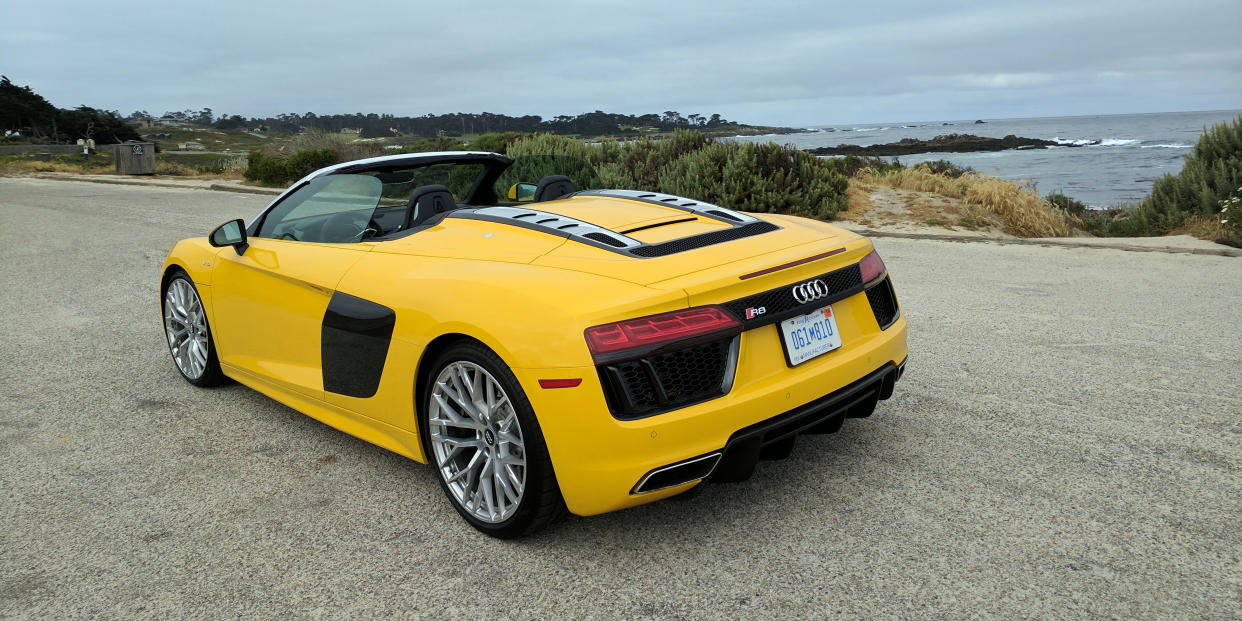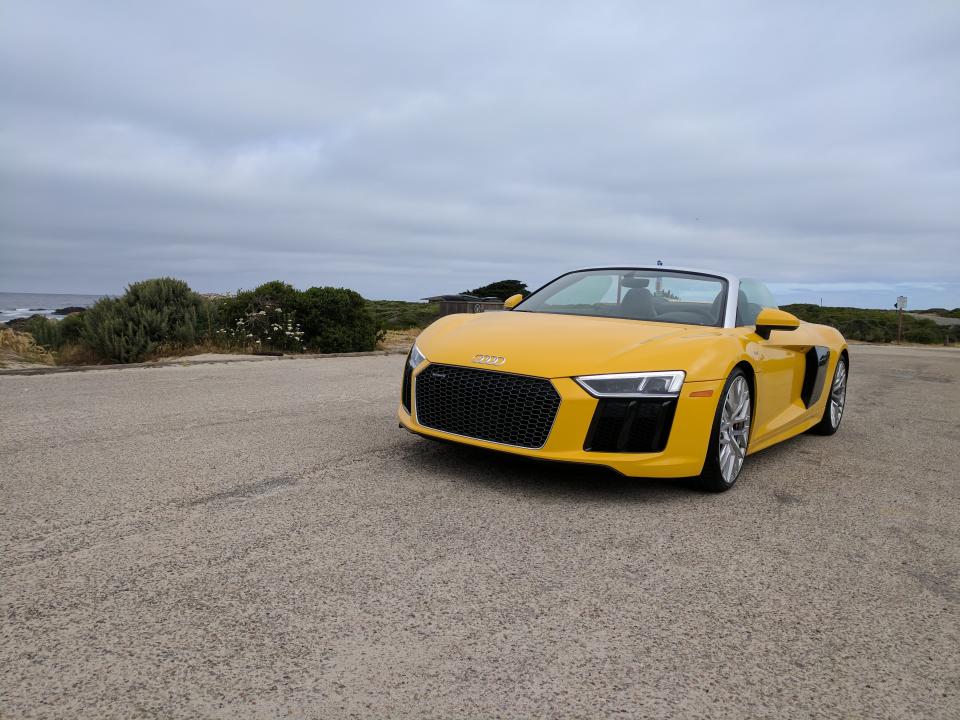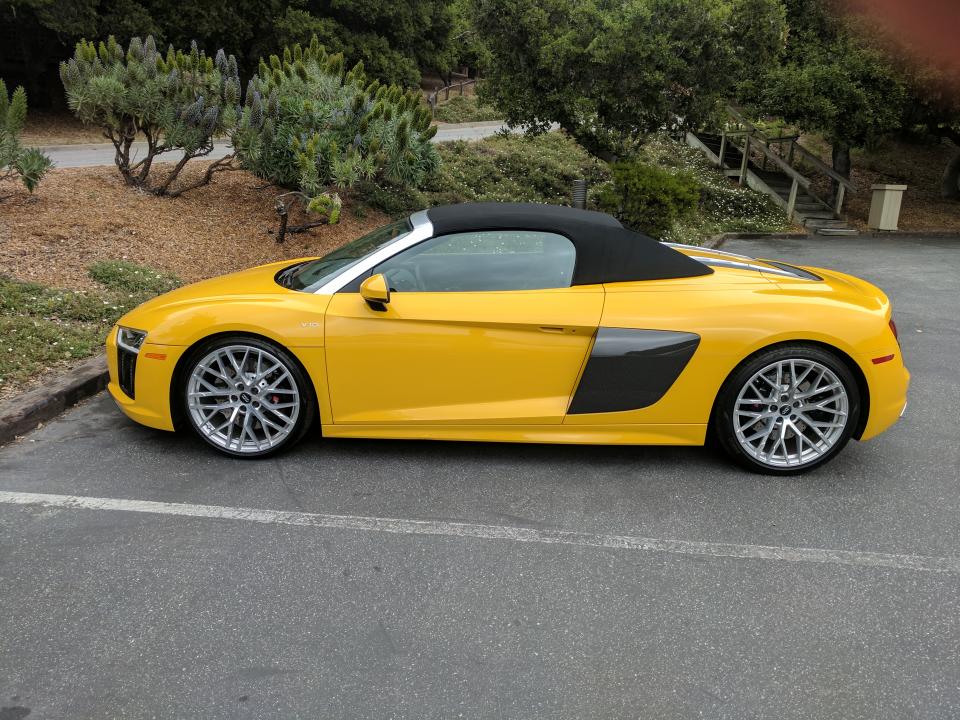What You Learn After Driving the R8 Spyder

What You Learn is a recurring look at the cars passing through R&T's test fleet. Sometimes you'll learn a lot about the car, other times, not so much. But it'll always be a succinct take on something we've driven recently. - Ed.
Drop top supercars are always seen as compromised compared to their hard top brothers. A folding top typically means there is more weight and less rigidity, a combination that makes the car less focused than the original design, just so you can drive around with the wind in your hair.
But, maybe we've been exaggerating all this time at how much worse a convertible is. Perhaps, in some cases, the convertible version is better.
Take the Audi R8, for instance. As a coupe, the R8–and particularly the R8 Plus–are fantastic. Both have V10 engines with either 540 or 610 horsepower, a telepathic seven speed dual clutch gearbox, and Audi's brilliant Virtual Cockpit infotainment system. It also looks amazing. Though it's not as revolutionary as its predecessor, this generation of R8 is chiseled and angular, an update to the classic that you either love or hate. Like it's brother, the Lamborghini Huracan, it's a brilliant car to drive on a track or a fast back road.

But what if you don't go to the track? What if you're driving a longer distance on a great road? What if you just like wind in your hair?
We place a lot of value on a car that's brilliant on a track–it is 50 percent of our name–but it's not 50 percent of the driving that we do. I'd wager that 98 to 99 percent of the time, we're on the road. And for that time on the road, the R8 Spyder is more enjoyable nine times out of ten.
First, the Spyder looks brilliant. Unlike its predecessor, the Spyder keeps the R8's signature carbon sideblade. It also has the chrome windshield surround, the rear deck appears lower, and there's an additional bit of black mesh on the rear end which actually makes it look better. I'd say it's the best looking version of the R8, particularly the Vegas Yellow our test car came in.
Once you're on the move with the top down, there is a decent amount of buffeting from the wind, but it's not appalling. And you can really hear that brilliant naturally aspirated V10 when you're on the move. But the best part is how the soft top transforms the car.
The R8 coupe is very serious. You feel like you need to be stern behind the wheel, concentrating. The Spyder is different. It's relaxed. You don't feel the need to go for every last tenth, to brake as late as possible, or to race away from every light. You know that the power and handling are still there, but this becomes more of a grand touring experience.

Granted, it's not as grand tourer-y as an Aston Martin DB9 or a Mercedes-AMG GT. That high strung V10 is still behind the driver, there's even less storage space than the R8 coupe, and it's still a stiff ride. But top down on Highway 1 outside of San Francisco, you don't notice that at all. You notice that R8 is great a cruising at 60, that the radio can overpower the wind noise easily, that the gearbox and engine are docile in comfort, and that all of that can change if you put the transmission in manual and the drivetrain in dynamic. And in that setting, it'll still handle better, be quicker, and sound more magnificent than most every car on the road. It might not be as quick as the Plus Coupe, but if you're driving that fast you'd probably end up with the car impounded anyway.
If you're a track rat or keen on having the hardest core version of a supercar to show just how tough you are, then perhaps the R8 Spyder isn't for you. But if you don't care about the track and you want an R8 that's more than a manic back road weapon, the Spyder is the right choice.
You Might Also Like

